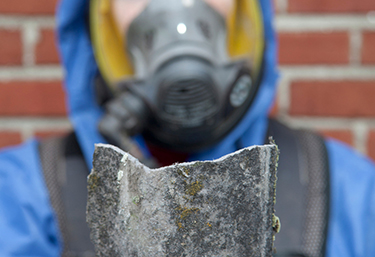The Environmental Protection Agency is working to close the door on asbestos, issuing a ban this week on a form of the material that is still actively used in U.S. manufacturing.
Announced March 18, the final rule will put an end to ongoing uses of chrysotile asbestos, which was still imported, processed and distributed in the U.S. as recently as 2022, according to EPA. 
“Exposure to asbestos poses a grave risk to health,” APHA said in a statement. “Today’s rule is a major step toward achieving a ban on all forms of asbestos.”
Chrysotile asbestos is found in products such as after-market automotive parts and gaskets, but is used primarily in the manufacture of chlorine, which is used in drinking water purification, pesticides and pharmaceuticals.
Asbestos use in the U.S. has been decreasing for decades under a partial ban that blocked it from being applied to pipes and in building construction. The new ban is the first enacted under amendments to the Toxic Substances Control Act, which is also being used by EPA to assess more than a dozen other chemicals for their potential harm to human health.
“It’s been more than 50 years since EPA first sought to ban some uses of asbestos, and we’re closer than ever to finishing the job,” Scott Faber, Environmental Working Group senior vice president, said in a statement.
Celeste Monforton, DrPH, MPH, a lecturer at Texas State University, said EPA’s new rule could reduce exposure throughout the chrysotile asbestos production chain — from workers who mine, handle and transport the substance, to those in the U.S. chlor-alkali industry who process it, clean equipment and dispose of it.
“There is no safe use of asbestos,” said Monforton, who is chair of the Occupational Health and Safety Section’s Policy Committee. “There are so many opportunities for something to go wrong.”
Asbestos exposure is associated with mesothelioma and lung, ovarian and laryngeal cancer, and is linked to more than 40,000 U.S. deaths annually. The new ban will end imports of chrysotile asbestos now, but companies will have up to 12 years to phase out complete use.
The announcement was widely praised, though some health advocates said they were disappointed by the lengthy phase-out. They also criticized EPA for not banning imports of other forms of asbestos fibers, which the agency is reviewing in the second phase of its asbestos risk evaluation. A draft of that evaluation will be released soon and published by Dec. 1, the agency said.
“EPA should permanently ban all asbestos imports and uses — both current and discontinued — so they do not add to the threat to the American public that this deadly chemical poses,” Liz Hitchcock, director of Safer Chemicals Healthy Families said in a statement.
Health advocates also called for Congress to pass the APHA-supported Alan Reinstein Ban Asbestos Now Act, which would end all asbestos imports and use within a year of its adoption.
Photo by Bartco, courtesy iStockphoto